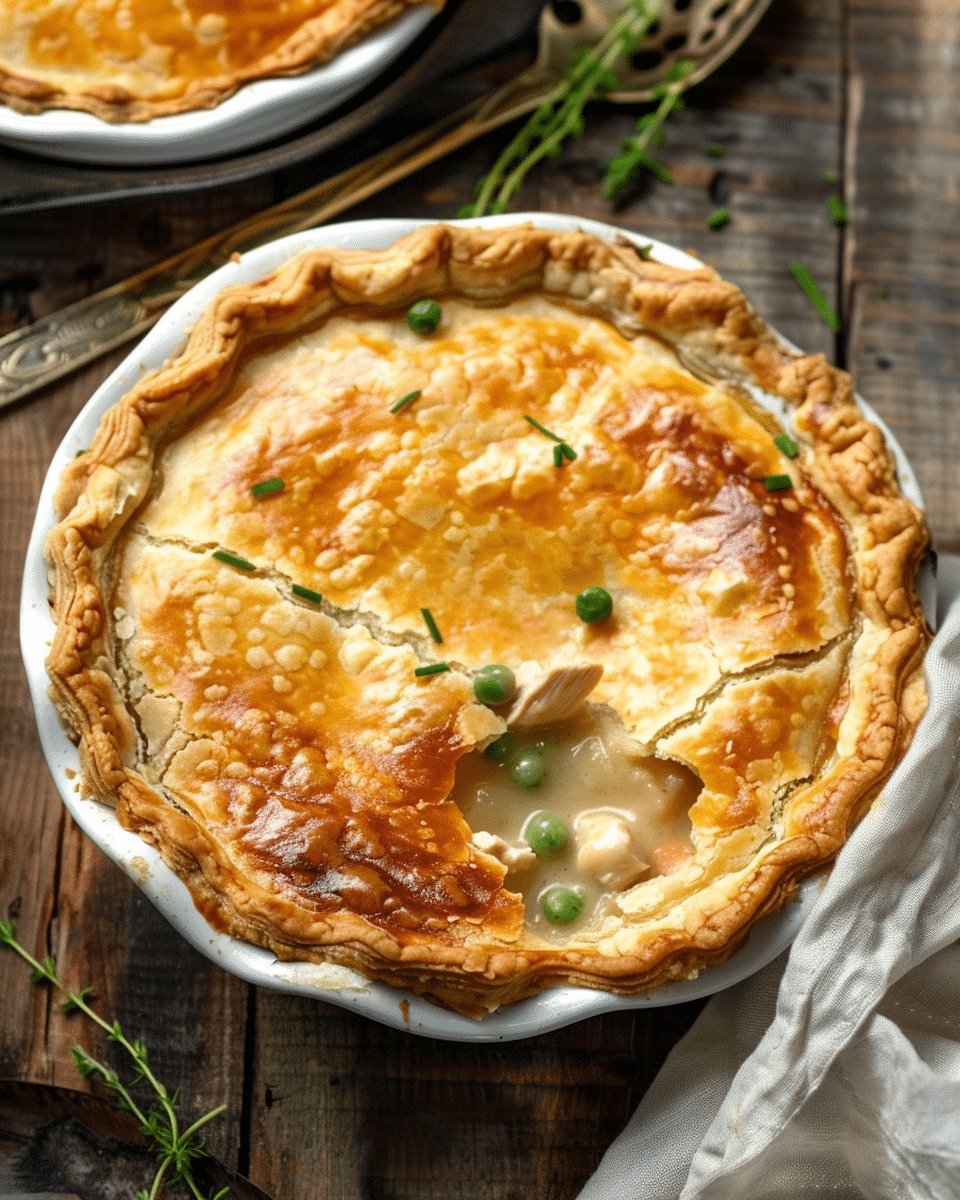When it comes to indulging in delectable dishes, blackened tenders often make it to the top of many food enthusiasts’ lists. But the lingering question remains: Are blackened tenders healthy? This article aims to dissect the components, cooking techniques, and nutritional values of blackened tenders to provide a comprehensive understanding of their impact on our health.
Key Takeaways:
- Varied Nutritional Content: Blackened tenders offer a good source of protein, but watch out for potential high sodium and fat content.
- Preparation Matters: Cooking methods and ingredients used can significantly impact the healthiness of blackened tenders.
- Potential Health Concerns: Be mindful of charred parts and sodium levels, as they can pose health risks.
- Making Healthier Choices: Opt for homemade seasoning and cooking sprays to control ingredients and make a healthier version.
- Balance and Moderation: Enjoy blackened tenders as part of a balanced diet, and be conscious of portion sizes.
Ingredients Used in Blackened Tenders
When delving into the culinary world of blackened tenders, it’s crucial to highlight the myriad of ingredients that contribute to their unique flavor and aroma. These tenders, known for their bold and spicy profile, are a fusion of various elements that come together to create a mouthwatering dish. Below, we will explore the key ingredients used in blackened tenders, shedding light on their roles and impacts on the overall dish.
Proteins: The Foundation of Blackened Tenders
First and foremost, at the heart of blackened tenders is the protein. Typically, chicken is the protein of choice, known for its lean nature and ability to absorb the rich flavors of the spices and herbs used. It’s essential to choose high-quality, preferably organic, chicken to ensure a clean and healthy base for your dish. Some chefs might also experiment with other proteins like turkey or fish, offering a unique twist to the traditional recipe.
Spices and Herbs: Crafting the Signature Flavor
Next, we transition to the soul of the dish – the spices and herbs. Blackened tenders are renowned for their bold and spicy flavor profile, which is achieved through a careful blend of seasonings. Key spices include paprika, cayenne pepper, garlic powder, onion powder, and thyme. These spices not only contribute to the rich flavor but also bring with them a host of health benefits, such as anti-inflammatory properties and antioxidants.
Paprika: A Sweet and Smoky Touch
Paprika, often made from dried and ground bell peppers or chili peppers, adds a sweet and smoky dimension to the tenders. Its vibrant red color also enhances the visual appeal of the dish.
Cayenne Pepper: Turning Up the Heat
Cayenne pepper is responsible for the signature heat in blackened tenders. A little goes a long way with this spice, and it can be adjusted according to personal heat tolerance.
Garlic and Onion Powders: Aromatic Essentials
Garlic and onion powders bring an aromatic depth to the dish, grounding the spices with their earthy and pungent flavors.
Thyme: A Fragrant Herb
Thyme, with its minty and lemony notes, adds a layer of complexity and fragrance to the blackened chicken tenders, elevating the overall flavor profile.
Oils and Fats: For Cooking and Flavor
Additionally, the choice of oils and fats used in the cooking process plays a significant role. Opting for a high-smoke-point oil, such as avocado or grapeseed oil, is crucial as blackened tenders require cooking at high temperatures to achieve the characteristic charred exterior. The oil also aids in the even distribution of spices and herbs, ensuring each bite is as flavorful as the next.
Citrus: A Zesty Finish
Finally, a squeeze of fresh lemon or lime juice is often the finishing touch on blackened tenders, cutting through the spice and richness with a burst of zesty freshness. This not only balances the flavors but also adds a bright and tangy note that elevates the entire dish.
Explore: How To Get 100g Protein Without Meat?
Cooking Methods for Blackened Tenders
Exploring the world of blackened tenders, it’s not just the ingredients that play a crucial role in the final outcome of the dish, but also the cooking methods employed. The technique used to cook these tenders is paramount in achieving the signature charred exterior while maintaining a juicy and tender interior. Let’s dive into the various cooking methods that can be utilized to prepare blackened tenders, each offering a unique take on this flavorful dish.
Grilling: Infusing Smoky Flavors
Grilling is a popular method for cooking blackened tenders, providing a distinct smoky flavor that complements the bold spices used in the marinade. When grilling, it’s essential to preheat the grill to a high temperature and ensure the tenders are well-coated with oil to prevent sticking. The high heat of the grill chars the exterior of the tenders, locking in the juices and creating a deliciously crispy texture.
Direct vs. Indirect Grilling
With grilling, you have the option of direct or indirect grilling. Direct grilling involves placing the tenders directly over the heat source, resulting in a quicker cooking time and a more pronounced char. Indirect grilling, on the other hand, places the tenders away from the direct heat, allowing them to cook more slowly and evenly.
Pan-Searing: Achieving a Crispy Crust
Pan-searing is another excellent method for cooking blackened tenders, particularly if you’re looking for a quick and convenient option. Using a heavy-bottomed skillet, such as a cast-iron pan, ensures even heat distribution and a perfect sear. The tenders should be cooked on high heat for a short period, allowing the spice rub to caramelize and form a crispy crust.
The Importance of a Hot Pan
Ensuring the pan is adequately heated before adding the tenders is crucial in pan-searing. A hot pan facilitates the Maillard reaction, which is responsible for the delicious browning and flavor development in cooked meats.
Baking: A Healthier Alternative
For those seeking a healthier alternative, baking blackened tenders is a fantastic option. Preheating the oven and using a wire rack allows the heat to circulate around the tenders, cooking them evenly on all sides. While this method may not provide the same level of char as grilling or pan-searing, it results in a tender and flavorful dish with less oil.
Utilizing the Broiler
To achieve a crispy exterior when baking, you can utilize the broiler for the last few minutes of cooking. This exposes the tenders to direct, high heat, mimicking the effects of grilling and creating a charred, crispy finish.
Air Frying: A Modern Twist
The air fryer offers a modern twist on cooking blackened tenders, combining convenience with health benefits. By circulating hot air around the tenders, the air fryer cooks them quickly and evenly, resulting in a crispy exterior without the need for excess oil.
When air frying blackened tenders, it’s important to avoid overcrowding the basket to ensure even cooking. Additionally, flipping the tenders halfway through the cooking process ensures a uniform crispiness.
Read: Blackened Chicken Tenders
Nutritional Content
When diving into the world of blackened tenders, it’s imperative to thoroughly examine their nutritional content to get a clear picture of their impact on our health. This section will break down the various nutritional components of this popular dish.
Macronutrients: The Energy Providers
First and foremost, let’s discuss the macronutrients found in blackened tenders: carbohydrates, proteins, and fats.
Protein: The Building Block
Blackened tenders are predominantly made of chicken, which is a fantastic source of lean protein. Protein is essential for the repair and growth of tissues, making it a vital nutrient, especially for those who lead an active lifestyle or are looking to build muscle mass.
Carbohydrates: The Fuel Source
While chicken tenders themselves are low in carbohydrates, any breading or marinating ingredients can add to the carb content. It’s important to consider what you’re using to coat your tenders if you’re watching your carbohydrate intake.
Fats: The Sustained Energy
The fat content in blackened tenders can vary depending on the cooking method and any additional ingredients used. Opting for grilling or baking over frying can significantly reduce the unhealthy saturated and trans fat content, promoting better heart health.
Micronutrients: The Hidden Gems
Beyond the macronutrients, blackened tenders also offer a variety of essential vitamins and minerals.
Vitamins: The Vital Players
Chicken is a good source of several B-vitamins, particularly niacin (B3) and B6, which play a crucial role in energy production and brain health. Additionally, the spices used in blackening seasoning can contribute antioxidant properties, thanks to vitamins A and C.
Minerals: The Supporting Cast
Blackened tenders provide essential minerals such as phosphorus, which is important for bone health, and selenium, a mineral that acts as an antioxidant and is crucial for thyroid function.
Sodium: The Double-Edged Sword
One aspect of blackened tenders that requires careful attention is their sodium content. While sodium is an essential electrolyte for body function, too much of it can lead to high blood pressure and other cardiovascular issues. Many blackening seasonings and marinades can be high in sodium, so it’s wise to look for low-sodium options or make your own seasoning blend at home.
Calories: The Energy Measure
The caloric content of blackened tenders can vary based on the size of the tenders and the cooking method used. Being mindful of portion sizes is crucial to ensure that you’re not consuming more calories than needed.
Health Benefits of Blackened Tenders
Blackened tenders are not only a delight to the taste buds but also bring along a spectrum of health benefits, thanks to their nutritious ingredients and cooking methods. The combination of lean protein, spices, and cooking techniques results in a dish that can be both delicious and beneficial for your health. In this section, we will delve into the various health benefits associated with blackened tenders.
Protein-Rich and Low in Fat
Blackened tenders are primarily made from chicken, a lean source of protein that is essential for building and repairing tissues, making enzymes and hormones, and supporting overall muscle growth and development. Unlike red meat, chicken is low in saturated fats, which, when consumed in moderation, can be a healthier option for those looking to maintain a balanced diet.
Lean protein sources like chicken tenders are lower in calories and fats, making them an excellent choice for those aiming to lose weight or maintain a healthy weight. Protein also has a higher thermic effect than fats or carbohydrates, meaning your body burns more calories digesting protein.
Spices: A Boost of Antioxidants and Anti-inflammatory Properties
The spices used in blackened tenders, such as paprika, cayenne pepper, garlic powder, and onion powder, are not just for flavor—they also offer a variety of health benefits.
Many of the spices used in blackened tenders are rich in antioxidants, which help neutralize free radicals in the body, potentially reducing the risk of chronic diseases and supporting overall health.
Some spices, like cayenne pepper, have anti-inflammatory properties that can help reduce inflammation in the body, benefiting individuals with inflammatory conditions like arthritis.
Potential Health Concerns
While blackened tenders can be a delicious and protein-rich addition to your diet, it is crucial to be aware of potential health concerns associated with this dish. By understanding these issues, you can make informed choices to enjoy blackened tenders in a way that supports your overall well-being.
High Sodium Content: A Risk for Blood Pressure
One of the main health concerns with blackened tenders comes from the seasoning used to achieve that signature flavor. Many blackening spices and pre-made rubs can be extremely high in sodium. Consuming too much sodium can lead to elevated blood pressure levels, increasing the risk of heart disease and stroke.
To mitigate this risk, you could opt for homemade seasoning blends, allowing you to control the amount of salt used. Additionally, seeking out low-sodium versions of pre-made seasonings can also be a viable option.
Potential for Charring: Carcinogenic Concerns
The blackening process, typically achieved through high-heat cooking methods like grilling or pan-frying, can sometimes lead to the charring of the chicken’s exterior. While this charring can enhance flavor, it can also produce harmful compounds known as heterocyclic amines (HCAs) and polycyclic aromatic hydrocarbons (PAHs), which have been linked to an increased risk of cancer.
To minimize the formation of these harmful compounds, avoid overcooking the tenders and refrain from consuming any charred portions. Implementing cooking methods such as baking or using a cast-iron skillet can also help control the heat distribution and reduce the risk of charring.
Saturated and Trans Fats: The Heart Health Impactors
Depending on the cooking method and any additional ingredients used, blackened tenders can sometimes be high in unhealthy saturated and trans fats. These types of fats can contribute to the build-up of plaque in the arteries, leading to heart disease.
Choosing cooking methods that require less oil, or opting for healthier oil options like olive oil, can help reduce the intake of these unhealthy fats.
Allergens and Sensitivities: Know Your Body
Some individuals may have allergies or sensitivities to certain spices used in blackening seasonings. Common allergens can include garlic or onion powder, and some blends may even contain gluten.
Always check ingredient labels if you purchase pre-made seasoning blends, and be mindful of potential cross-contamination if you have known food sensitivities or allergies.
How to Make Blackened Tenders Healthier
Making blackened tenders healthier is a commendable goal, ensuring you can enjoy this flavorful dish without compromising your well-being. Below are strategies and tips to help you achieve a healthier version of blackened tenders.
Opt for Lean Protein Sources
The first step in creating healthier blackened tenders is to choose a lean protein source. Opt for skinless, boneless chicken breasts, as they are low in fat and high in protein. Ensure to trim any visible fat before cooking to reduce saturated fat intake.
Make Your Own Seasoning
Pre-made blackening spices can be high in sodium, which can contribute to high blood pressure. Creating your own blackening spice mix at home allows you to control the amount of salt used. Use a variety of herbs and spices such as paprika, thyme, onion powder, and garlic powder to create a flavorful mix without the need for excess salt.
Choose Healthier Cooking Methods
The method used to cook your blackened tenders can significantly impact their healthfulness. Baking or grilling the chicken tenders instead of frying them can reduce the amount of added fats, making the dish healthier. If you choose to grill, ensure to cook at a lower temperature and avoid charring to reduce the formation of harmful compounds.
Be Mindful of Portions
Paying attention to portion sizes is essential when striving to make a dish healthier. Ensure to serve an appropriate portion size, complementing the blackened tenders with a variety of vegetables and whole grains to create a balanced and nutritious meal.
Pair with Healthy Sides
The sides you choose to serve with your blackened tenders can play a significant role in the overall healthiness of your meal. Choose steamed vegetables, salads, or whole grains such as brown rice or quinoa as side dishes. These sides provide additional nutrients and fiber, contributing to a more balanced meal.
Watch Your Condiments
Condiments and sauces can quickly add extra calories, sugars, and fats to your meal. Opt for low-calorie, low-sugar, and low-fat condiments, or consider making your own at home where you can control the ingredients used.
Are Blackened Tenders Healthy?
When it comes to evaluating the healthiness of blackened tenders, it’s essential to consider the ingredients used, the cooking methods employed, and how this dish fits into your overall diet. Blackened tenders, with their flavorful spice rub and lean protein base, can indeed be a healthy option when prepared thoughtfully and consumed in moderation. Let’s break down the components to give a comprehensive answer to the question, “Are blackened tenders healthy?”
Nutritional Profile of Blackened Tenders
Blackened tenders are primarily made from chicken, a lean source of protein that is low in fat, particularly when the skin is removed. Protein is a crucial macronutrient needed for building and repairing tissues, maintaining muscle mass, and supporting overall bodily functions.
Opting for chicken tenders or breasts ensures a lean protein source, and when cooked without excessive oil or butter, the dish remains low in saturated fats. This makes blackened tenders a heart-healthy option compared to fried or heavily processed meats.
The Spice Rub: Flavor Without the Calories
The signature blackened spice rub is packed with flavor, allowing for a delicious dish without the need for calorie-laden sauces or marinades.
Many of the spices used in the blackened rub, such as paprika, garlic powder, and onion powder, have antioxidant and anti-inflammatory properties, contributing to the overall healthiness of the dish.
Cooking Methods Matter
The healthiness of blackened tenders also depends on the cooking method. Grilling, baking, or pan-searing with a minimal amount of oil are healthier alternatives to frying.
These cooking methods help reduce the overall fat content of the dish, ensuring a leaner and healthier final product.
Portion Control and Balance
As with any dish, portion control is key to enjoying blackened tenders in a healthy way. Pairing a sensible portion of tenders with a variety of vegetables and whole grains results in a balanced and nutritious meal.
Incorporating blackened tenders into a well-rounded diet that includes a variety of food groups ensures you receive a balance of essential nutrients.
Potential Downsides to Consider
While blackened tenders have many health benefits, it’s important to consider the potential downsides. The spice rub can be high in salt, which, when consumed in excess, can lead to health issues such as high blood pressure.
Being mindful of the salt content in the spice rub and balancing it with other low-sodium foods throughout the day can help mitigate this potential issue.
In conclusion, when prepared with lean chicken, a flavorful spice rub, and a healthy cooking method, blackened tenders can indeed be a healthy option. By practicing portion control and balancing this dish within a varied diet, you can enjoy the delicious flavors of blackened tenders while also reaping the health benefits they offer. So, are blackened tenders healthy? Yes, they can be a nutritious and tasty addition to your diet.
FAQs
How many calories are in blackened tenders? A single blackened chicken tender has approximately 50-70 calories, depending on its size and the ingredients used in the seasoning.
How much nutrition is in a blackened tender? Blackened tenders are a good source of protein, with roughly 7-10g per tender. They also contain various nutrients depending on the seasoning used.
How many calories are in 5 piece blackened tenders? A serving of 5 blackened chicken tenders contains around 250-350 calories. The exact count depends on the preparation and ingredients.
How many calories are in blackened chicken strips? Blackened chicken strips have about 50-80 calories each, varying based on size and seasoning. They offer a tasty and protein-rich option.
Conclusion
In conclusion, while blackened tenders are a popular and flavorful dish, it’s crucial to approach them with a mindful eye towards nutrition and health. By understanding the potential health concerns, such as high sodium levels, the risk of charring, and the presence of unhealthy fats, we can take proactive steps to mitigate these issues and enjoy blackened tenders in a healthier way.
Choosing lean protein sources, making your own low-sodium seasoning mix, opting for healthier cooking methods, and being mindful of portion sizes and side dishes are all effective strategies to enhance the nutritional profile of this beloved dish. Furthermore, being aware of any personal food sensitivities and choosing appropriate condiments can also play a significant role in ensuring that your meal is both enjoyable and health-conscious.
The journey towards healthier eating doesn’t have to mean sacrificing flavor or foregoing your favorite dishes. Instead, it’s about making informed choices, understanding the impact of different ingredients and cooking methods, and finding balance in your overall diet. Blackened tenders can indeed be part of a healthy and balanced diet when prepared and enjoyed thoughtfully.
As we strive to make healthier choices in our daily lives, remember that every small step counts. By choosing to make blackened tenders healthier, you are taking a positive step towards nurturing your body, enhancing your well-being, and savoring the flavors you love in a mindful and healthful way. So go ahead, enjoy your blackened tenders with confidence, knowing that you’ve made choices that support your health and your taste buds!








